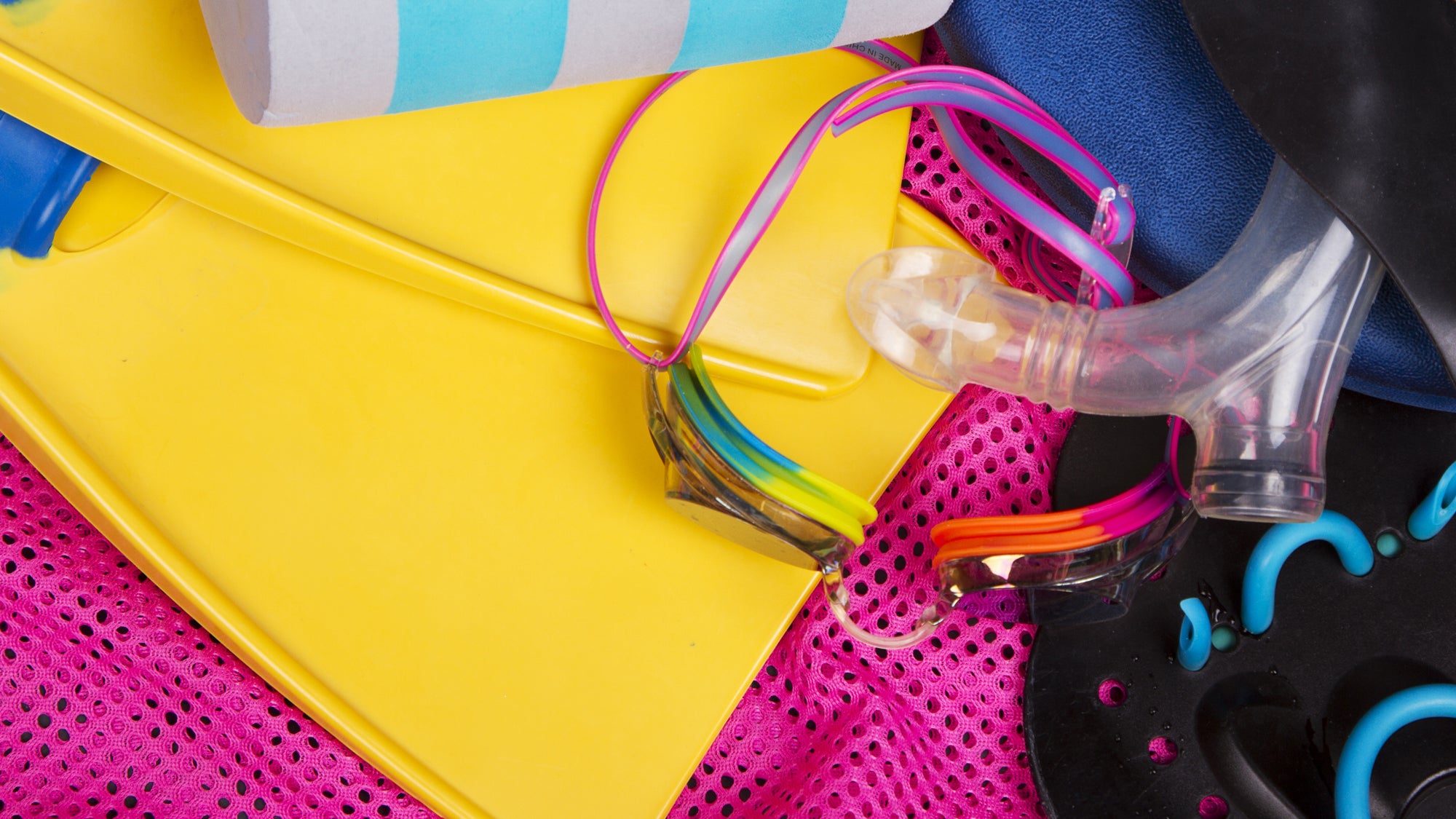Day 6: Marie Kondo Your Swim Gear

Confession: I have never, ever used my master bath tub for its intended purpose. More than five years in my house, not once have I sat for a luxurious soak. Yes, it’s partly a time thing, partly an “I have tiny tots” thing (though those tiny tots would surely enjoy an expanded bubblescape). But really, what’s kept us from frolicking in that tubby space is it’s always overflowing with swim gear. It is the dumping ground for wetsuits, bathing suits, goggles, swim caps, paddles, pull buoys, everything aquatic. But not anymore. This New Year, I took back the tub by Marie Kondoing my swim gear.
Even if your bathroom isn’t overflowing in old race caps, tackling swim gear is the perfect start to achieving Gear Zen–that magical place where you know what you have, where it is, and everything you own functions well. Why swim first? Save for your wetsuit, swim gear is relatively inexpensive, so finding something amiss won’t induce panic. Remove, replace, repeat.
There’s some science linking clutter (hoarding, specifically) to anxiety. Perhaps organizing your swim gear will help clear your mind and get you excited about pool time. But there’s one simple reason we’ve included this task in the January Challenge: When all of your gear is easy to find and functional, you’ll spend more time swimming and less time gathering what you need to jump in. Because we know all it takes sometimes is an extra five minutes searching for goggles to kill the “I’m going to the pool!” vibe.
Not each piece of your swim gear must spark joy (ankle bands, anyone?). But it does have to be functional, and generally opaque. Below, our editors’ suggestions for getting it together, inspired by The Godmother of Decluttering, Marie Kondo:
1. Organize your gear by category: goggles in one pile, swim caps in another, bathing suits in another. You get the idea.
2. Pick a pile and inspect each item in it.
Goggles
Should not be scratched, and the band should not be on the verge of snapping. Most regular swimmers find one pair of goggles lasts four to six months before pool chemicals and general use weaken the seal.
How many goggles should you have?
Our editors peg the magic number at three–for each type of swimming you’re doing. For example, if you typically swim masters indoors, make sure you have three of your favorite goggles for that purpose: one to swim in, one on deck just in case, and one more pair as extra backup–or to share, if need be. If you’re also swimming outside and like tinted goggles for that purpose, grab three of your faves for that, too. This way, you’ll always have your eyes covered. Need help finding the right goggles for you? Read this.
Swim Caps
If you’re racing a lot, it’s easy to amass a small mountain of caps. Pick each cap up and try to put it on your head. If you can’t stretch it out without destroying it, time to let it go. If your mountain has smooshed together into one big glob of latex, say adios! Thank each cap for accompanying you through a successful swim, then chuck the goopy, sticky ones. Take a photo if you must. Keep only those that can actually go for a swim. How many to keep? Caps are simple: keep whichever ones work, no matter how many. Don’t have any that work? Keep yourself stocked with three to five–you never know when one’s gonna blow.
Bathing suits
Ask yourself these questions in order: Can you see your bum through it? Chuck! Does everything stretch correctly–straps and waistbands snap back when you tug on them>? Continue. Perfectly opaque? Continue. Does it fit? If yes, keep! How many swimsuits should you have? Keep the suits that cleared your inspection. Don’t have any that cleared? Like goggles, go with the rule of three: one to wear, one on deck, one as backup. That way you’ll never have to suffer the chill of putting on a damp suit before jumping in.
Wetsuits
Inspect your wetsuit(s). Check the seams for signs of strain, make sure the zipper works, and check for fingernail marks. Find any weak spots? Learn how to do repairs here. As our resident swim expert, Sara McLarty writes, it’s time to splurge on a new suit if: “your suit has major damage that can’t be sufficiently repaired, you have significantly changed body sizes or weight or if you own a relic from a previous decade. Improvements in technology and fit warrant buying a new suit every 5–7 years.” Time to shop new? Here’s how to find the right suit for you. Want to make your baby last? Here are a few tips to make it to 7 years.
Check your swim paddles to see if you need to replace the rubber finger holds, and take a look at your swim buoy and kick board. If they float, they’re generally fine.
Once you’ve decided what to keep, you can put most of it in a swim bag. Put your caps in a special pocket, if you can, so nothing can rip them, and keep your goggles in a case or sleeve to avoid scratching. Anything you’re keeping as backup that doesn’t need to take every trip to the pool with you, store in a cool, dry place. Not in your master bathtub.
On a roll? Do your run gear next! Here’s how to know when to ditch your running shoes.